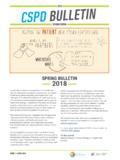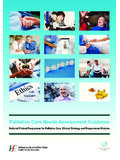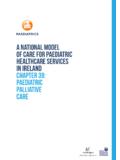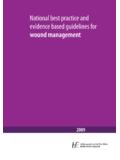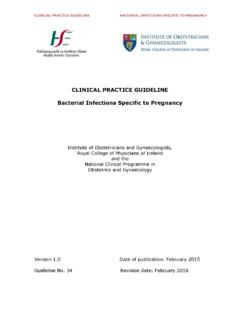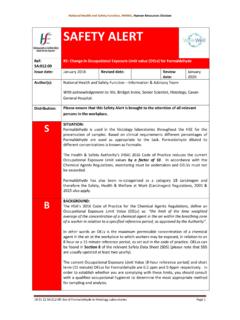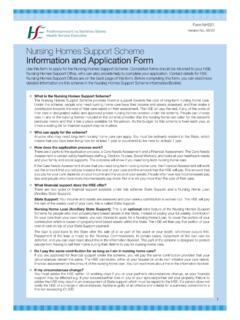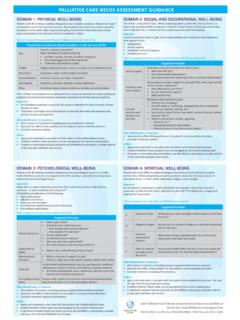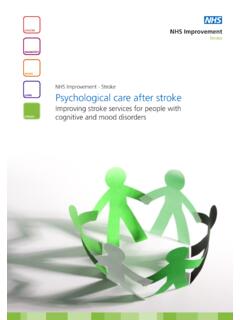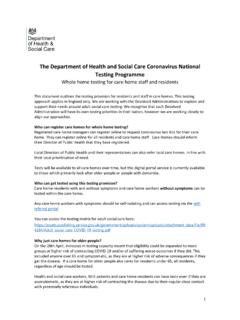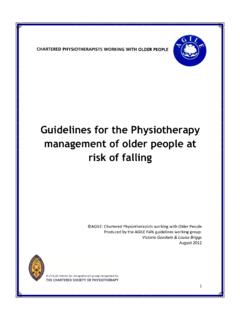Transcription of Comprehensive Geriatric Assessment A Summary
1 national clinical programme for older people Doc Version 1: December 2015 Comprehensive Geriatric Assessment A Summary Adapted from Specialist Geriatric Team Guidance on Comprehensive Geriatric Assessment national clinical programme for older people (2016) national clinical programme for older people 2016 Page 2 Overview Comprehensive Geriatric Assessment (CGA) is fundamental to the Assessment , planning and intervention required to meet the health and social care needs of the older person that is frail or at risk of frailty. Rather than the traditional way of working separately, CGA results in doctors, nurses, physiotherapists, occupational therapists, social workers and other members of the team working closely together to ensure an integrated Assessment and response to the older person s individual needs.
2 CGA has the potential to improve the care they receive in hospital, reduce unnecessary hospital admissions, lengths of stay and readmissions. What is a Comprehensive Geriatric Assessment ? Comprehensive Geriatric Assessment (CGA) is an organised approach to Assessment designed to determine an older person s medical conditions, mental health, functional capacity and social circumstances. Its purpose is to develop and implement a coordinated and integrated plan for treatment, rehabilitation, support and long term follow up. CGA is based on the premise that a full evaluation of a frail older person by a team of healthcare professionals may identify a variety of treatable health problems, resulting in a co-ordinated plan and delivery of care leading to better health outcomes.
3 Benefits of CGA The benefits of CGA, in comparison to less structured multidisciplinary Assessment where each discipline approaches the patient s Assessment and plan of care in isolation, include: improves diagnostic accuracy optimises medical and rehabilitation treatment enhances health and functional outcomes informs the development of individualised care plans assists in avoiding the potential complications of hospitalisation facilitates effective discharge planning. Who should have CGA? The national clinical programme for older people recommends that all older adults identified as being frail or at risk of frailty should have a timely Comprehensive Geriatric Assessment performed and documented in their permanent health record (HSE 2012).
4 Substantial evidence shows that in hospital, those who receive inpatient CGA on specialist Geriatric wards are more likely to return home, are less likely to have cognitive or functional decline and have lower mortality rates than those who are admitted to general wards (Ellis et al., 2011). national clinical programme for older people 2016 Page 3 Note on Frailty Pattern of Frailty Frailty Decreased Physical Activity Poor Nutrition Decreased Reserve older people living with frailty or at risk of frailty are admitted to hospital more frequently, have longer length of stay and occupy more bed days in acute hospitals in comparison to other patient groups.
5 Frailty is increasingly recognised as a distinctive state of health related to the aging process in which multiple body systems gradually lose their inbuilt reserves. It is not an inevitable part of ageing; it is a long term condition in the same sense as diabetes or Alzheimer s disease (BGS 2014). Clinically, older people who are frail have poor functional reserve, so that even a relatively minor illness or a change in medication can lead to a sudden catastrophic functional decline causing the person to fall, become immobile or rapidly confused, or to present non-specifically with failure to thrive (Clegg et al 2013). Frailty is a graded abnormal health state which ranges from mildly frail (those who need supported self-management), through those who are moderately frail and would benefit from structured interventions from healthcare professionals, to those who have advanced frailty where anticipatory care planning and end-of-life care may be appropriate interventions.
6 Frail people should not be perceived as a problem to the system but, rather, clinicians should support people living with frailty to maintain their own health for as long as possible (NHS 2014). Adapted from Clegg (2013) Instability (Falls)) Immobility Incontinence Changes in cognition Iatrogenic Multiple underlying causes can often be improved with appropriate Assessment and intervention including rehabilitation Stressor event Increased care needs Admission to hospital Admission to longterm care national clinical programme for older people 2016 Page 4 Identifying Frailty When is CGA indicated?
7 When an older person is identified as being at risk of frailty, whether in an acute hospital, day hospital, community or residential care, they should be considered for a CGA. The content of the Assessment may vary depending on different settings of care ( , home, clinic, hospital, nursing home). A key element of CGA is that the environment in which it is delivered is gerontologically attuned (McCabe & Kennelly 2015). If indicated, CGA should be initiated as soon as possible after admission to hospital by a skilled, senior member of the multidisciplinary team, and used to identify reversible medical problems, target rehabilitation goals and plan all the components of discharge and post-discharge support needs (Oliver et al 2014).
8 There are two possible approaches to identifying frailty: Presence of frailty syndromes: Falls ( collapse, legs gave way, found lying on floor ) Immobility/ decreased mobility ( sudden change in mobility, gone off legs , stuck in toilet ) Delirium ( acute confusion, muddled , sudden worsening of confusion in someone with previous dementia or known memory loss) Incontinence ( change in continence new onset or worsening of urine or faecal incontinence) Susceptibility to side effects of medication ( confusion with codeine, hypotension with antidepressants) (British Geriatric Society 2014). Validated frailty Assessment tools: Rockwood clinical Frailty Scale. PRISMA 7 Questionnaire Timed up and go Test The Groningen Frailty Indicator Questionnaire Edmonton Frail Scale.
9 national clinical programme for older people 2016 Page 5 Who should carry out CGA? Members of the CGA multidisciplinary core team should include experienced individuals drawn from medical, nursing and health and social care professions. This multidisciplinary team is responsible for the coordinated Assessment , discussion and recommendation or implementation of treatment plans. Dietetics Pharmacists Podiatry In most teams, a senior geriatrician will have the responsibility for team leadership. Experienced team members can vary in their roles including physical and functional assessments, providing advice and coordination of teams and services.
10 The geriatrician and medical team often serve an integrative function, putting together the findings from other disciplines, and interpreting results of investigations in order to find a unifying diagnosis and hence guide a Comprehensive , interdisciplinary management and treatment plan. Elements of CGA No one size fits all CGA can be developed locally depending on the members and seniority of the multidisciplinary team. The Assessment should, however, consist of the elements depicted here: The four main dimensions of CGA are listed overleaf. The CGA multi-disciplinary team may include: Medical geriatrician, psychiatry of old age, palliative care specialist, GP Nursing Medical social worker Physiotherapy Occupational therapy Speech and language therapy Dietetics Pharmacists Podiatry Many components of CGA can be jointly undertaken by a number of disciplines on the team as some of the assessments and interventions overlap.
